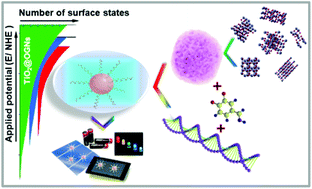Band edge engineering of TiO2@DNA nanohybrids and implications for capacitive energy storage devices†
Abstract
Novel mesoporous TiO2@DNA nanohybrid electrodes, combining covalently encoded DNA with mesoporous TiO2 microbeads using dopamine as a linker, were prepared and characterised for application in supercapacitors. Detailed information about donor density, charge transfer resistance and chemical capacitance, which have an important role in the performance of an electrochemical device, were studied by electrochemical methods. The results indicated the improvement of electrochemical performance of the TiO2 nanohybrid electrode by DNA surface functionalisation. A supercapacitor was constructed from TiO2@DNA nanohybrids with PBS as the electrolyte. From the supercapacitor experiment, it was found that the addition of DNA played an important role in improving the specific capacitance (Cs) of the TiO2 supercapacitor. The highest Cs value of 8 F g−1 was observed for TiO2@DNA nanohybrids. The nanohybrid electrodes were shown to be stable over long-term cycling, retaining 95% of their initial specific capacitance after 1500 cycles.


 Please wait while we load your content...
Please wait while we load your content...